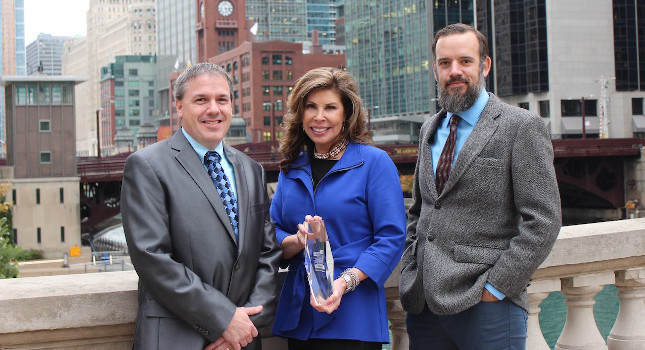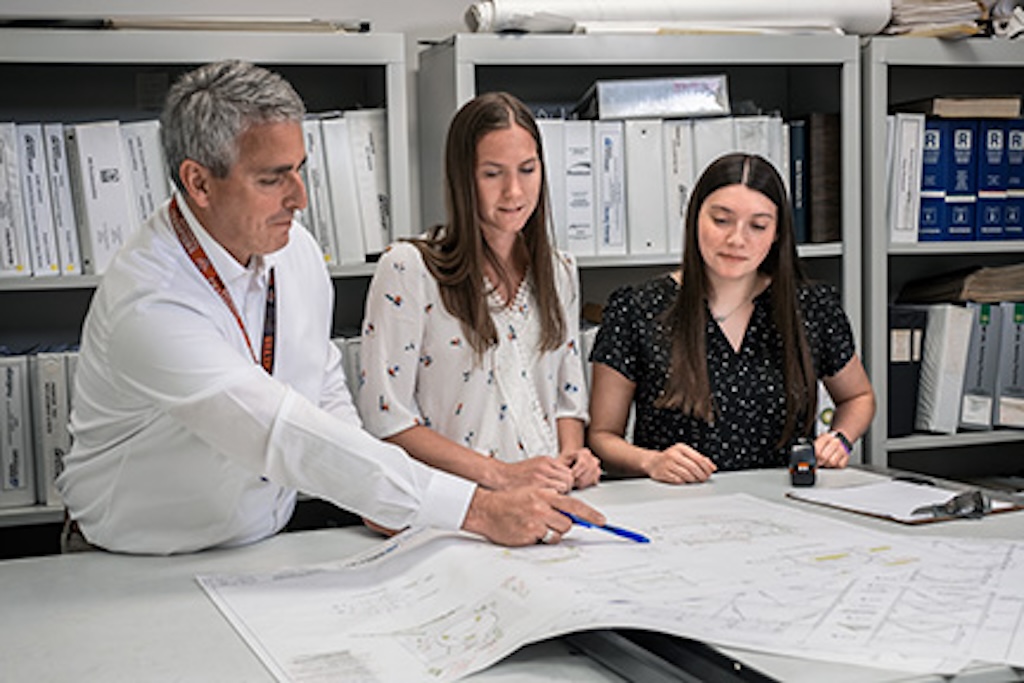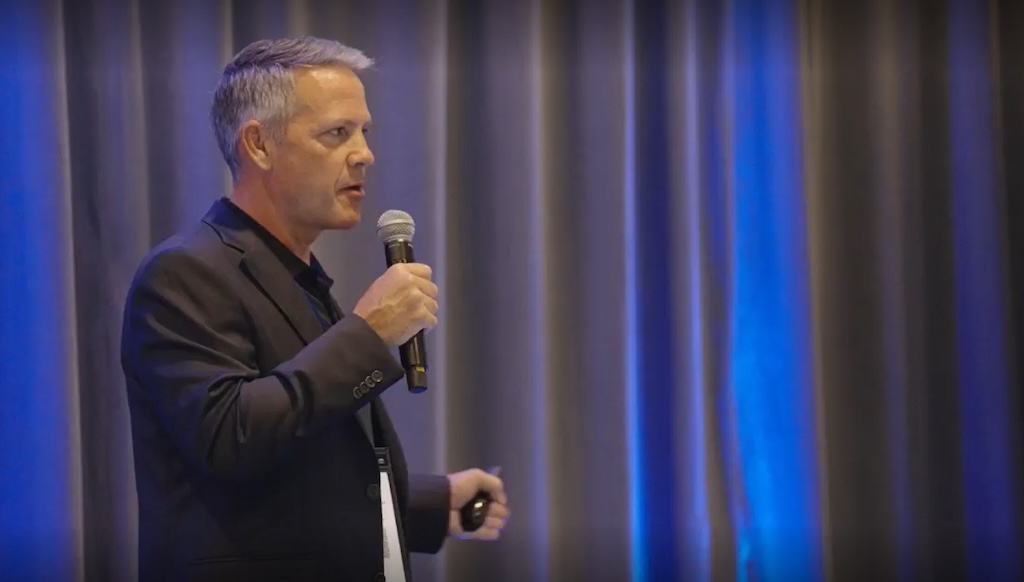Malisko Engineering is the 2020 System Integrator of the Year for the Mid-Sized System Integrator Category. Executives from the company share some of the company's success stories and advice. See video.

Creativity and innovation are common elements of successful system integrators. Those who rise to the top, and remain there, share these and other admirable characteristics. Malisko Engineering Inc. reflects on its success and relationships with its customers. CFE Media spoke with Malisko’s leadership, including:
- Steve Malyszko, president and CEO
- Nancy Lange, COO
- Dan Malyszko, director of operations
- Matt Scott, director of mentorship and lead systems integrator
- Steve Schneebeli, director of engineering/IT.
CFE Media: Congratulations on receiving the 2020 System Integrator of the Year award. Talk about what this kind of recognition means to you and your team.
Nancy Lange: We take a lot of pride in the work we do. So, of course seeing our team recognized as a “Top of the List” Integrator, for the second time, is an exciting yet humbling honor. Putting together the System Integrator of the Year submission takes a group effort because the submission touches so many facets of what makes a “Top Shelf” integrator.
Being a Control System Integrators Association (CSIA) member who has been through three recertifications strengthens our business foundation and value proposition to our clients — key elements of the System Integrator of the Year considerations. It helps us reflect on our company skills, gives us the opportunity to review what we have accomplished and pushes us to become better through a program of continuous improvement.
Looking back to 2015, one of the most gratifying experiences of receiving the System Integrator of the Year honor was making the announcement to our team and seeing what it meant to them. It brought an already tight group even closer. It seemed to spur creativity and innovation.
CFE Media: How does Malisko go about getting client buy-in for your “Front-End Engineering Design (FEED)?”
Matt Scott, Steve Schneebeli: First, and foremost, we listen to the client before we make our pitch to engage in FEED. We try to get the client to share with us what are their challenges; what are their restrictions; what are the end goals? How confident are they with the accuracy of their project cost budget and/or project schedule? What about their allotted timeframe for shutdown? Is the project scope of sufficient detail to ensure a high degree of project success? If it’s a competitive bid situation, then how confident is the client that their bid evaluation process will yield the best, possibly not the cheapest, offering to them?
Once we hear, we ask pointed questions to further uncover the challenges, and more clearly envision how we can help them be successful.
Sometimes, we are successful in convincing a client the value of making the investment in FEED. Other times a client might not or cannot allocate monies to pay for FEED.
CFE Media: Talk about information technology/operations technology (IT/OT) convergence. Are end-users “getting it?” What is Malisko doing to help ease IT/OT convergence anxieties?
Scott, Schneebeli, Dan Malyszko: Different clients are at different points of their journey along the road of data convergence between the shop floor and the carpeted space. Some end-users are “getting it” when you talk about why IT/OT convergence is vital now and into the future. It makes sense quickly when we focus on the destination at the end of the client’s journey. What we see being more of a challenge is grasping the how. How do you get to a point where you are ready for what’s coming? We advise clients that they need specialists involved who understand both the IT and the OT sides.
An important component to success is the customer also having alignment between IT and OT within their organization. Often, digital transformation initiatives start on the enterprise side of the house with a specific business case, and IT is typically challenged by their leadership to take more ownership of the connected things on the industrial side. This can be perceived as a threat to manufacturing operations, and for good reason. Operations is all about uptime and system availability when it comes to manufacturing.
Historically, OT has tried to keep IT at bay when it comes to involvement in their systems to avoid costly system outages that may arise from lack of understanding of the intricacies of the industrial equipment. We see this as an opportunity for the integrator. We have developed great relationships with IT departments and have even tailored workshops that are specifically targeted toward IT professionals to help them better understand the OT world.
We find that we gain credibility by having our top-tier network and security specialists right alongside process and data experts to not only plan a path for convergence but also show what it will do for their business. Helping bridge that gap between IT and OT professionals is the biggest area where we help ease anxieties when it comes to IT/OT convergence. Its more about the people than the technology.
CFE Media: What are some of the effective ways your customers are using IIoT technology in manufacturing?
Malyszko: Right now, we are seeing edge-computing being a major enabler for other IIoT technologies. Specifically, since many digital initiatives come from the IT side, we must figure out a way to bring IIoT technology to the plant floor in the least disruptive way possible. One area where we are seeing success is deploying network infrastructure with edge-computing technology embedded at the network switch layer: for example, Cisco IOx running micro-services and containerizing applications. This compute capability at the edge allows us to connect to controllers and other endpoints to harvest data without having to touch the process control’s main supervisory control and data acquisition (SCADA) system.
We also are seeing more wireless sensing systems with their own gateways that need to be connected. Aggregating data at the edge from wireless sensing systems along with other key controller tag data helps create the foundation of an IIoT connectivity layer. Typical applications we’re seeing as well as involved with deploying include system health monitoring, preventive maintenance (with vibration monitoring, current sensing, and control valve operation degradation) and other business analytics.
CFE Media: How are you working with your clients to move forward in their journey toward digital transformation? How engaged are they on this journey?
Malyszko, Scott: Most clients have heard the buzz phrase “digital transformation.” A sector of clients struggles to understand what good digital transformation will do for their company. We sit down with those clients and demonstrate to them the “art of the possible.” We explain to these clients where and how digital transformation can positively impact their own unique business operations; aggregating data from segments such as manufacturing, market analysis, suppliers and logistics, then performing business analytics. These clients become more engaged in the dialogue as they better see the value of “the possible.”
At this point, we help them understand where they are now, what capabilities their current platforms have and what they’ll need to support the long-term data aggregation and analytics. We help them create their roadmap including planning, remediation, designing and deploying. We see better acceptance of “the possible” when we can help the client better understand their starting point for their journey along digital transformation.
CFE Media: In your opinion, what is the role of the system integrator in the digital transformation?
Malyszko, Scott, Schneebeli: Traditionally, our job as integrators was to merely implement control and data systems in the manufacturing space specified by clients. Over time, the industry has experienced client resources dwindling in numbers thus causing clients to rely more on outside professional resources. In numerous instances, the client lacks the in-house resources to support complex control systems, virtualized computer systems, multilayer network architectures with intricate security methods.
In these scenarios, many times the client’s in-house resources become more of a facilitator instead of a subject matter expert (SME). This is where the role, and value, of an SI makes a paradigm shift to provide more technical support and guidance for the client along with taking on a greater responsibility to better understand the business needs and challenges of their client.
The role of the SI becomes more encompassing on the SI to understand the client’s business objectives so the SI can provide relevant guidance to the client on the “art of the possible” through digital transformation.
CFE Media: Malisko faces the same workforce development challenges as others in the manufacturing sector. Talk about your programs to meet this challenge and talk about the young people entering this industry. What are their expectations, and how can system integrators have greater success in attracting and retaining these workers?
Lange: A career relating to manufacturing is not perceived by many engineering students as glamorous as pursuing a career with tech companies such as Google, Amazon or Facebook. Malisko partners in programs with local universities, such as Colorado State University, to allow our engineers to speak to the engineering students about a career in manufacturing automation.
Additionally, Malisko actively engages our engineers in student projects providing guidance and practical mentoring, thus further exposing the students to be a “part of the magic” of our chosen profession. Malisko participates in numerous on-campus college career fairs to inform and, hopefully attract, potential employees with a genuine interest in system integration for manufacturing automation.
Our newest employees believe additional industry sessions from integrators or automation companies would help portray being a system engineer as a viable career path. We have great success with internship programs for engineering students. Fortunately, Malisko has found several engineering students who do, in fact, more readily gravitate to the world of manufacturing automation than to other potential pursuits.
Most important, we value our employees and respect the individuals who are a part of the Malisko Engineering Inc. team. It is always evolving by trying to offer competitive benefits, a flexible work environment, internal mentorships, exposure to cutting edge technology and continuing to listen to the needs of employees and stay mutually loyal. A dedicated human resource department that encourages and values the employees by offering peer-to-peer groups with one-on-one sessions. We truly are committed to their development as engineers and people.
CFE Media: Talk about a recent customer success. What were some of the things you learned in success with the customer?
Steve Malyszko, Scott: We routinely meet client expectations, schedules, budgets and constraints on projects. That’s what a good services provider is supposed to do and is what clients pay us for. In theory, consistent and repeatable successes should bring long-term repeat business. But that’s not always the case — which sets the stage for Malisko’s recent customer success.
New people and new companies periodically show up on the scene as a result of retirements, career moves or company acquisitions. When this occurs, an integrator’s many years of diligent service to a client might go completely unnoticed or unappreciated by the new decision makers. We had a situation where that occurred at a client, we had been doing steady work for almost 20 years. The new decision makers brought in service providers they knew from previous employment and decided to stop using Malisko in favor of their preferred providers. Our technical staff was devastated by the news and outcome. Our company president and CEO said to let time take its course, that eventually something will happen that will expose the value Malisko provided to this client over the almost 20 years previous.
Two years passed. A new engineering manager at the client was brought in and quickly proceeded to audit several items relating to outside services. While he was continuing to find several very frustrating and irritating items, he simultaneously kept hearing Malisko’s name brought up by “old timers” in a very positive light. Eventually the new engineering manager requested we come back into this client. We were given a small project to prove ourselves to him. We exceeded his expectations. Now, Malisko is back in this client doing major project work with a sizable backlog of booked projects and projects we are quoting.
That, to Malisko, is a customer success!



